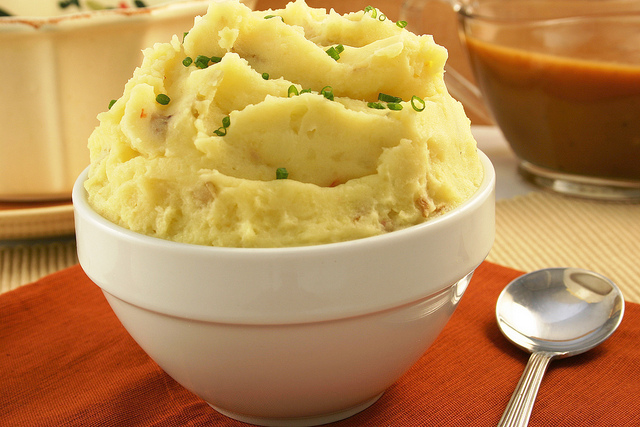It’s that time of the year again: the holiday season.
This means colder weather, sweaters, and my personal favorite, comfort food.
Despite all the fun activities that are associated with this time of the year, there is a downside.
The average person gains 4 pounds between October and January.
Having family food traditions is very important.
They can help you de-stress and get away from reality for a little bit, but that reality can turn into a disaster years later.
Putting on extra winter weight can be hazardous for your health.
Obesity is one of the leading causes of death that could easily be prevented.
During these next few months keep in mind what, and how much, you are eating.
Thanksgiving is typically a time that is spent with family and friends and has been celebrated in November since 1621.
This was when the Pilgrims celebrated their first harvest in the New World.
This celebration lasted three days and consisted of duck, venison, lobster, pumpkin, berries, and squash.
This is a huge difference to what we eat at today’s Thanksgiving; turkey, ham, sweet potatoes, mashed potatoes, green beans, corn, cranberries, stuffing, and various pies.
Today the average American consumes 4,500 calories on thanksgiving alone.
Even though the USDA recommends the average of between 2,000 and 2,800 calories, what we consume in one meal is almost twice what we should eat in one day.
Thanksgiving isn’t the only day we give into gluttony.
Christmas is another holiday that is commonly associated with feasting or celebrating with large amounts of food.
Today, the average American consumes an average of 7,000 calories on Christmas day alone.
It would take more than 10 hours of running, cycling at more than 20 mph for seven hours, climbing stairs for eight hours and skipping for 12 hours to burn off the 7,000 calories consumed on Christmas Day.
Outside of Thanksgiving and Christmas, New Years Eve is also another celebratory time where extra calories are consumed.
Unlike Thanksgiving and Christmas, a majority of the caloric consumption on New Years Eve is from alcohol.
During NYE celebrations, it is very common to see bottles of champagne being poured.
The average glass of champagne contains 90 calories, which may not seem like a lot but it would take you 20 minutes of jogging in order to burn that single glass off.
Other commonly consumed drinks include White Russians, spiked cider, and hot buttered rum.
All of these drinks can vary in calories but will normally range around 300 calories.
Keep in mind that many of these drinks you can ask to substitute heavy cream for skim or low-fat milk, which will cut the calories substantially.
However, all alcohol contains a relatively high amount of calories, so keep watch of what, and how much, you are drinking.
To put the calories consumed in our favorite foods in perspective, here is how much physical activity it would take to burn off one serving of your the following foods.
Today the average American consumes an average of 7,000 calories on Christmas day alone.
If you eat one slice of pumpkin pie, without whipped topping, you would need to run for 32 minutes to burn off the estimated 280 calories.
If you eat one cup of stuffing, which is worth 878 calories, you would need to swim at a high intensity for 80 minutes.
Mashed potatoes, (which I can easily eat two pounds of. Seriously, you can ask my mom.) alone have a whopping 238 calories for 1 cup without cream or butter.
To burn off these potatoes you would need to cycle at high intensity for 36 minutes.
Keep in mind that every individual serving may vary on caloric value and these are estimated values for exercise time.
There are many ways to easily cut down your caloric intake during these holidays.
The best way is to eat in moderation.
Do not have seconds, and take a reasonable portion size.
Many people feel obligated to eat everything that is on their plate; taking less will be easier on your stomach.
Another easy way to help cut calories is to take your time eating.
It takes about 20 minutes for your brain to send signals saying that your stomach is full.
The faster you eat, the less you will feel this signal and will consume more.
I was told that chewing a piece of food 20 times is the “proper” amount of chewing time.
If you chew this much your body will tell you when you are full at the correct time.
Also doing simple things like eating fresh cranberry sauce, choosing stuffing made from whole wheat bread, using less butter, and eating green beans instead of green bean hot dish, can easily cut down a large portion of unneeded calories.
Many people have New Year’s resolutions that commonly include “go to the gym more often”, “lose weight”, and “be healthier” (Although a better version would be to have a New Year’s resolution to be happy and healthy with yourself).
Hopefully after reading this you have a better idea of what you consume and how many excess calories you eat on your favorite holidays.
Many substitutions are very simple and the Internet has endless options if you are looking for a healthier version of one of your favorite foods.
Happy holidays!
